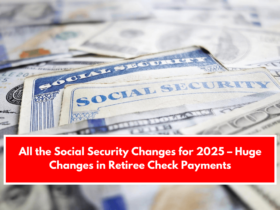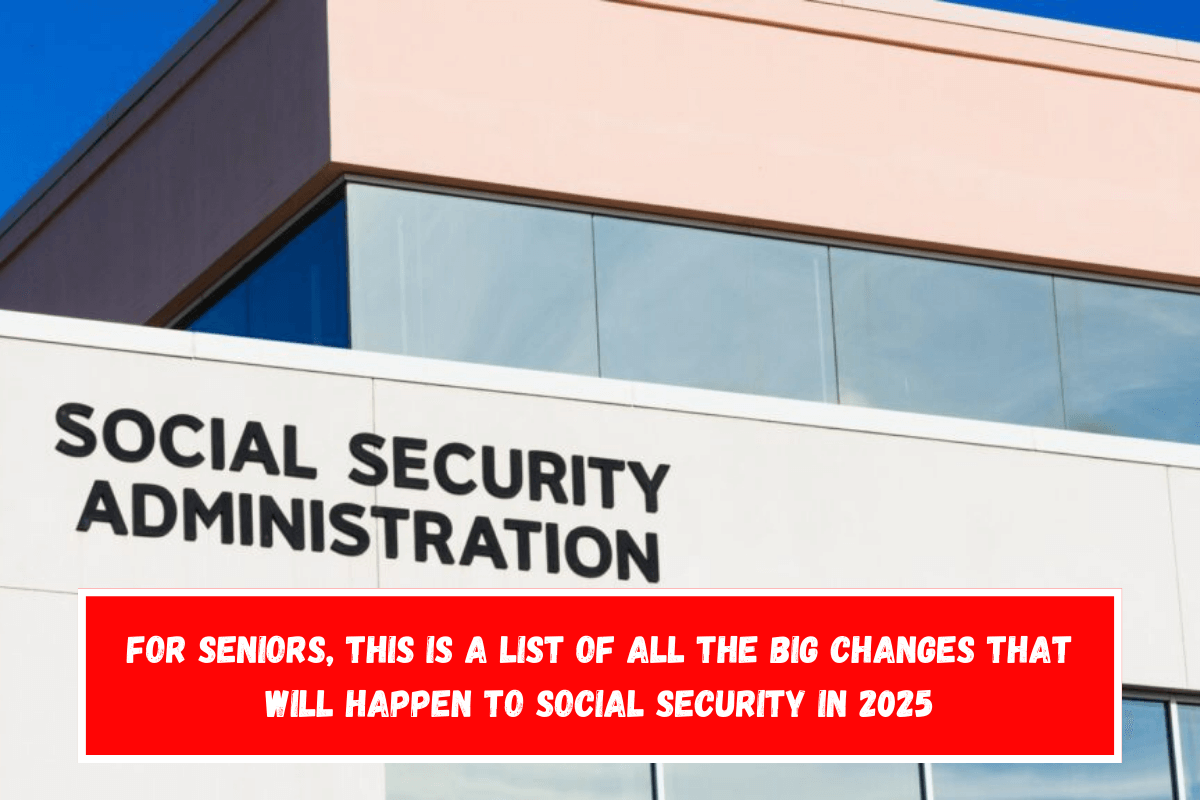The Social Security Administration changes its rules, requirements, and total payment amounts for more than 70 million people in the United States who get Social Security.
Most of these people are retirees. Statistics from Social Security show that about 30% of the money that people who are eligible for the retirement program get comes from Social Security payments.
The cost-of-living adjustment (COLA) for the program is expected to have a big effect on daily costs in 2025 because benefits are expected to go up. But there are some bad things about this rise as well.
There have been worries about Social Security’s long-term stability for a long time. The SSA says that by 2035, the program will only be able to make 75% of its planned payments.
The list of all the big changes coming to Social Security in 2025
Impact of Inflation on Social Security Benefits
Fixed incomes like Social Security lose purchasing power over time because of inflation. Inflation is also a big reason why Social Security benefits are changed every year. These changes are called cost-of-living adjustments (COLA), and they are based on changes in the Consumer Price Index for Civilian Wage Earners and Clerical Workers.
The cost of everyday goods and services goes up when inflation goes up. This makes it harder for retirees and other users to keep up their quality of life. Every year, this index is used to change Social Security payments so that seniors can still afford to live.
Also, experts think that if price pressures keep up, the COLA will go up again in 2025. We don’t have exact numbers yet, but this rise is expected to be smaller than the COVID-19 years. The COLA for 2023 is 8.7%, which is one of the biggest rates we’ve seen in recent years.
It’s likely that there will be a big rise in 2025, but not that big. It might not be good for people who are having a hard time with money, but retirees shouldn’t expect such a big raise.
Still, they should be ready to see something. Keep in mind that the changes could have a big effect on the daily costs of low-income people who depend a lot on Social Security. This is true even if the COLA only goes up by a small amount.
How does the COLA increase help Social Security beneficiaries?
The COLA isn’t perfect, but it helps Social Security payments keep up with the cost of living. The expected COLA increase in 2025 could be a dream come true for people who get Social Security.
As prices continue to rise due to inflation, it especially hurts low-income people like retirees who are living in poverty, and a COLA increase could help them a lot. Low-income seniors can feel safer about their money if their monthly income goes up by even a small amount.
It makes it easier for them to pay for things like food, shelter, and medical care. People whose benefits have been increased have more money to spend, which helps them keep up with their rising costs.
The cost of living adjustment (COLA) is meant to help retirees buy the same things they did the year before, even though prices are going up. But it’s important to remember that the COLA isn’t perfect.
It does not consider the specific things that seniors buy. Some seniors might still have a hard time even with bigger COLAs if inflation goes up faster than expected or if some costs, like health care, keep going up faster than inflation. COLA is a tool for guessing what costs will be in the future, but no algorithm is perfect, and any rise is better than none.

Social Security will face sustainability challenges
Social Security has enough cash on hand to pay out today, but in the future, it might not have enough for retirees. There’s more to the story, though. In 2025, Social Security payments will go up. This means that the program will need more money to run, which is likely to make recipients happy.
Payroll taxes are the main way that Social Security gets its money. Contributions from workers today pay for payments for retirees in the future.
But as the population ages and more people retire, the ratio of workers to beneficiaries has been slowly going down. Really, it’s just that more people are taking from the pot than are adding to it.
The SSA thinks that the program’s funds will run out in the middle of the 2030s if nothing is done to change things. Once this happens, the government will only be able to pay out about 75% of the benefits that were planned if payroll taxes keep coming in.
Most experts think that COLA increases will be the standard for the next few years, which will make the funding crisis for Social Security even worse.
Finding a good balance between seniors’ cash needs and the program’s ability to last is very hard. As more benefits are given out, more people want them cut back to make up for lack of money.
2025 comes with new potential reforms and policy solutions
Potential changes could have an effect on retirees’ monthly benefits, so they should keep a close eye on them. Due to budget problems, Social Security reforms are expected to be talked about in 2025. There may be changes to Social Security in 2026 or 2027, but they probably won’t have an effect in 2025.
Raising the payroll tax cap, which means that Social Security taxes are paid on earnings up to a certain amount, might get people with higher incomes to pay more into the system, which would bring in more money.
Also, the retirement age might go up, but the current plan only raises it slowly. This could be sped up or made bigger, but it probably won’t change all together.
Changing the way benefits are calculated is another possible option, especially for users with more money. At the moment, there is no income cap on Social Security. It makes sense to everyone.
But if the yearly income goes over a certain level, payments may be lowered. There is also the option of raising payroll taxes, which is less common because it would affect both employers and workers. However, no one wants to pay more taxes, right?
Also See:- Above-average September Social Security check rise: List of retirees getting more money















Leave a Reply